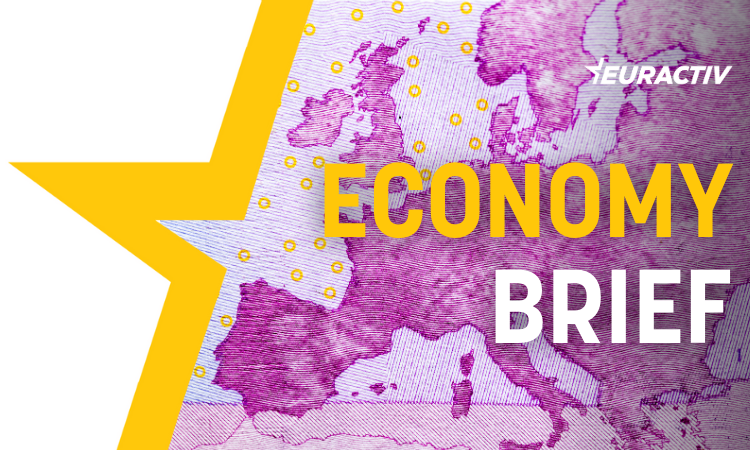
Welcome to EURACTIV’s weekly Economy Brief. You can subscribe to the newsletter here.
EU finance ministers are optimistic that they have come closer to an agreement on fiscal rules. So what do we know about what they will look like, and what remains open for discussion?
The worshippers of fiscal restraint are getting closer to their goal.
“Like the pilgrims in the ‘Camino de Santiago’, we are starting to see the cathedral at the end of the way,” Spanish Vice-President and Finance Minister Nadia Calviño told journalists after a meeting on Thursday (09 November).
Based on the Spanish “landing zone” paper, seen by Euractiv, and based on briefings by different member state diplomats, we can discern the main building blocks of that cathedral to the god of fiscal prudence.
What we know
All member states will have to follow country-specific net expenditure paths that will be negotiated together with the Commission. This path should ensure that the 10-year debt trajectory is “on a plausibly downward path” in countries with a debt level above 60% of GDP and that debt remains at “prudent levels” for all other countries.
The net expenditure paths should be based on the Commission’s debt sustainability analysis, the methodology of which the Commission will have to publish, but they will be hemmed in by two “safeguard” provisions: a minimum annual structural primary adjustment of at least 0.5 percentage points of GDP for countries with deficits above 3%, and a minimum debt reduction for countries with debt levels above 60% of GDP.
Moreover, there will be control accounts in which the yearly deviations from the net expenditure path will be recorded and accumulated for countries with debt levels above 60% of GDP and for countries with deficits above 3% of GDP.
If the control account surpasses a certain threshold, a Commission report will be triggered, which could then lead to the opening of an Excessive Deficit Procedure (EDP), the EU fiscal rules’ corrective arm.
Also, under pressure from the German government, the compromise text says there should be a safety margin to keep deficits below the 3% of GDP threshold.
Finally, we know that investments in the green transition will not enjoy any kind of preferential treatment. There is a somewhat preferential treatment of defence spending, however, as growing defence investments will be seen as an alleviating factor when triggering an EDP, as my colleague Aurélie Pugnet and I reported earlier this week.
When finance ministers were asked ahead of the meeting about whether the compromise would allow for enough investments for the green transition, they dodged the question, talking about “creating fiscal space” instead.
What we don’t know
Much of the fiscal sustainability cathedral is still hidden by fog. As the negotiators have only debated principles and no legal texts yet, it is difficult to gauge how exactly the safeguards will work.
For one, three important numbers have not been decided yet. First, we don’t know how large the minimum debt reduction should be, we don’t know at which level the net expenditure control account will trigger a Commission report, and we don’t know how big the “safety margin” to keep deficits below the 3% thresholds will be.
Moreover, it is unclear how the minimum debt reduction safeguard will work. It is said that it is an ex-ante provision that should help design the net expenditure path and should in the end lead to lower debt levels.
On the other hand, it also talks of “annual average” debt reduction. But for the design and the flexibility of a fiscal pathway, there is a crucial difference in whether the debt reduction is enforceable on an annual basis or just over the entire 10-year debt trajectory.
Also, the member states have agreed on a “no backloading” provision, meaning the fiscal effort should not be pushed back to the end of the adjustment period but should happen in a “linear” manner over the entire period.
At the same time the entire idea behind the country-specific fiscal plans is that, in the first years, some investments and structural reforms can be made that will help the country enhance growth and reduce debt levels via economic growth before making spending cuts that could hurt growth.
Finally, it’s unclear how much the European Parliament will try to influence the regulation once the member states have finally agreed on a position. The final deadline that negotiators now give themselves is March 2024, when the European Parliament will have its last plenary where it could approve a final deal.
To allow for this, member states want to get to an agreement among themselves by December. For this, the principles will have to be forged into legal texts and finance ministers will come together once more at the end of November for an extraordinary Council meeting.
With the legal texts and numbers in place, it will become clear whether this cathedral that Calviño talked about, will be more than just another place of worship for the god of austerity.
Chart of the week
In its latest global tax evasion report Gabriel Zucman’s EU Tax Observatory warned of the continued profit-shifting practices of multinational companies.
This week’s chart illustrates the problem from a European perspective, showing how much tax revenue EU countries forego (in most cases) or win (in a few cases) through corporate profit-shifting practices.
The winners in this game are Ireland and the Benelux states. Luxemburg enjoys additional tax revenues of $2 billion per year. Relative to Luxembourg’s population of around 640,000, this amounts to a tax rebate of more than $3,000 for every inhabitant.
You can find all previous editions of the Economy Brief Chart of the week here.
Economic Policy Roundup
Germany solves month-long spat on electricity prices for industries. Germany’s three-party ruling coalition has resolved an internal spat over electricity prices for industries that had been going on for months. Instead of a subsidy as proposed by Economy Minister Robert Habeck (Greens), taxes on power used by industry, approximately one-third of total demand in Germany, will be slashed down to the EU minimum of €0.50 per MWh. Special benefits will also be maintained for the 350 electricity-hungriest companies. [ADD LINK TO NIKO’S STORY ONCE OUT]
German exporters fume over failed EU-Australia trade deal. After the surprise failure of the year-long negotiations between the EU and Australia for a free-trade agreement, representatives of Germany’s export-oriented industries strongly criticised the outcome. The conclusion of the negotiations failed over a “ridiculous issue”, Karl Haeusgen, president of German machinery producers association VDMA told journalists on Tuesday (7 November). This would show a disproportionate influence of agricultural interests on trade policy, compared to its share of overall economic output, Haeusgen said. Read more.
French savings to finance defence industry. The French public savings scheme ‘Livret A’, which has historically been used to finance council housing, will now go into financing the defence industry and SMEs, according to new amendments to the 2024 budget bill. “It’s good news for our sovereignty, for reindustrialisation and for defence,” French defence minister Sébastien Lecornu posted on X on Thursday (9 November).
Interest rate increases ‘over for good’, French Central Bank governor said. The French Central Bank governor, François Villeroy de Galhau, said on Thursday (9 November) that the EU “was winning the fight against inflation and, bar surprises of shocks, interest rate increases are over,” though it is “too early to think about bringing them down”. After 10 consecutive increases, the European Central Bank (ECB) left its rates untouched in late October, at 4-4.75%.
NGOs ask the EU to include climate transition plans in Solvency II. On Tuesday (7 November), Finance Watch, E3G, ShareAction and other NGOs signed a letter calling on the EU institutions for mandatory transition plans to be included in the review of Solvency II, which is currently under negotiation. According to the signatories, transition plans would make sure insurers address climate change risks and the impact of their investments.
EU Parliament, Commission urge EU countries not to delay new budget revenues. “New own resources must be operationalised with no delay,” Commissioner Johannes Hahn said in the European Parliament on 9 November, adding that “an agreement on own resources will be understood as a sign of European cohesion and the ability to deliver on our commitments.” While EU lawmakers and the Commission want to adopt proposed new sources of revenue as soon as possible to help repay the pandemic recovery plan, member states are hesitating. Hahn said he hoped to close a deal before next year’s European elections, under the Belgian presidency of the Council.
Literature corner
European Commission not aware of 90 percent of EU fraud cases, EU Chief Prosecutor says
Unremunerated reserve requirements make the fight against inflation fairer and more effective
Germany needs more industrial policy
**Additional reporting by Silvia Ellena, Jonathan Packroff, Théo Bourgery-Gonse
[Edited by Zoran Radosavljevic]







